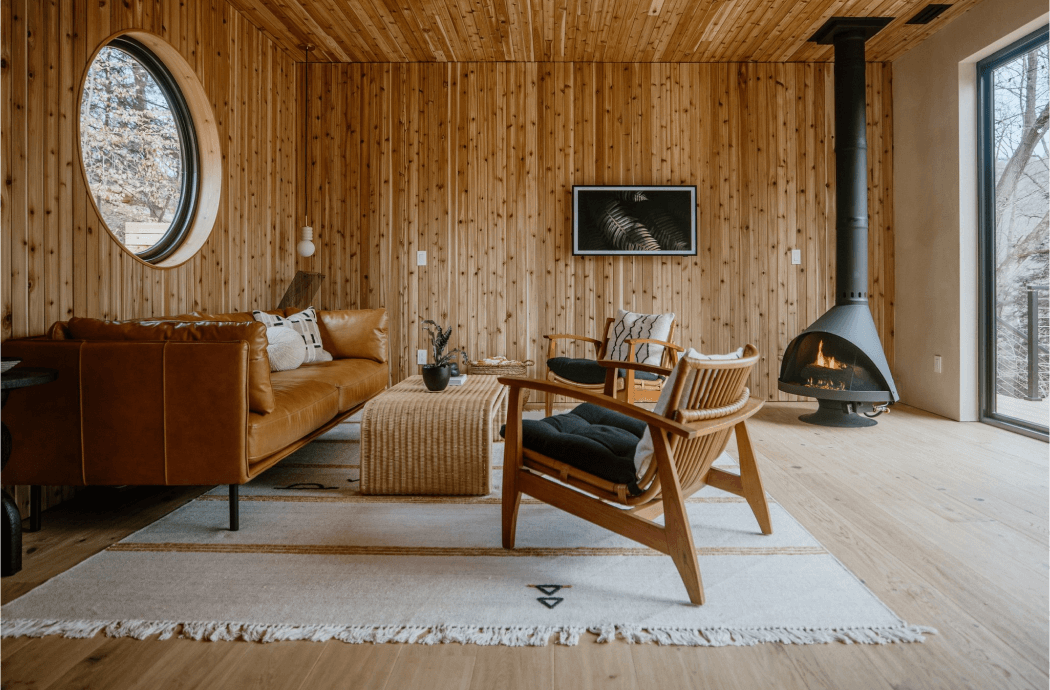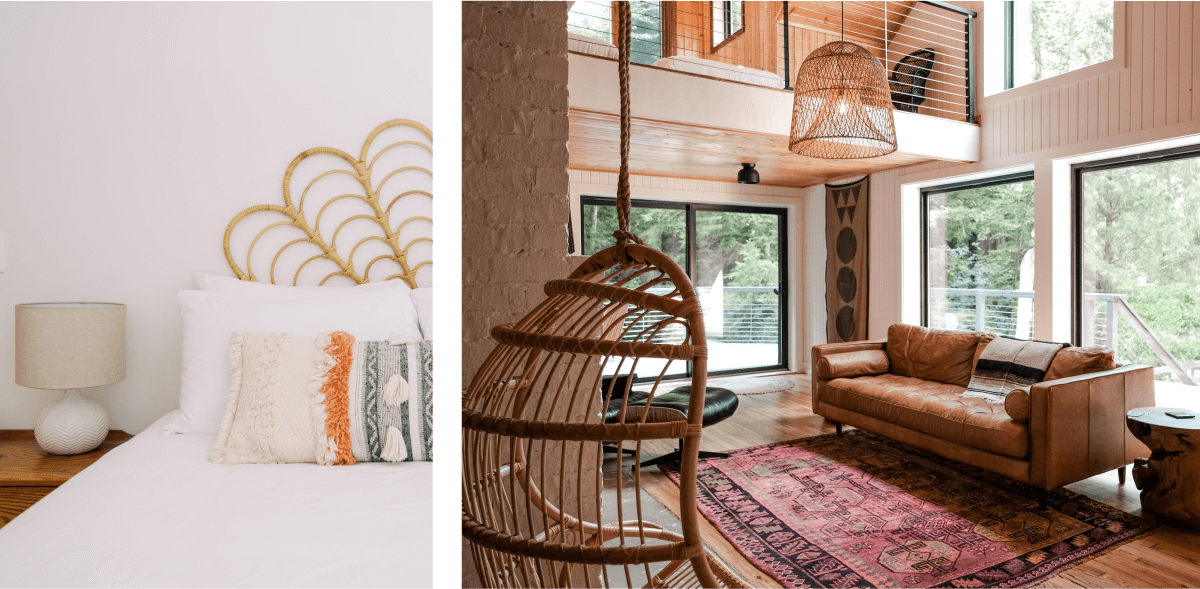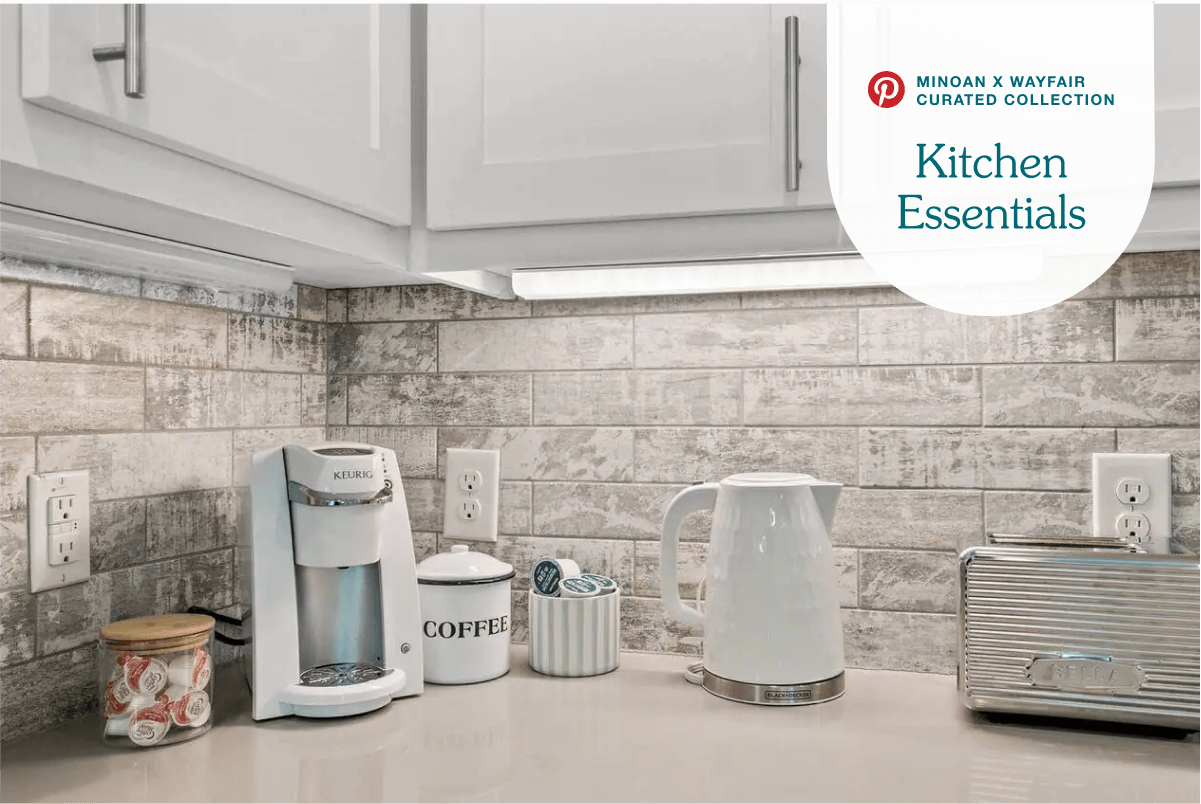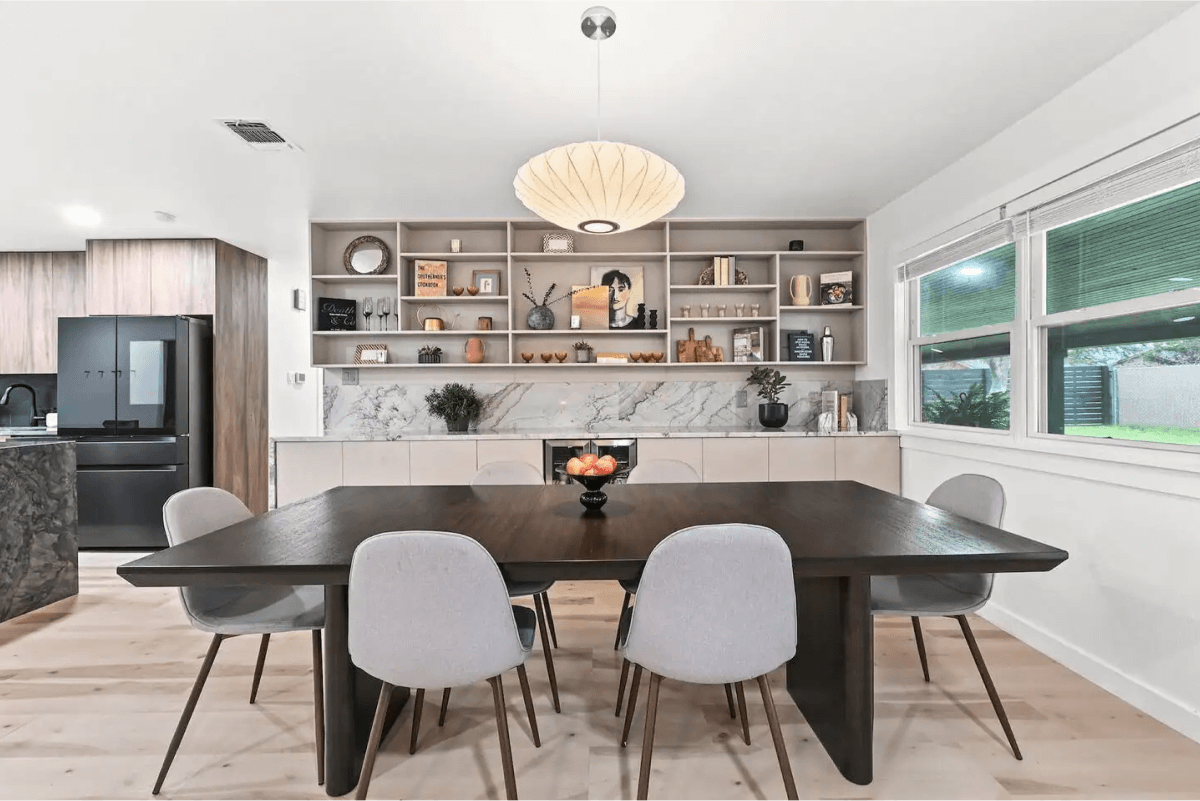This is the fourth article from our short-term rental design series. We’ve consulted several professional STR designers in the Minoan community to bring hosts the best design advice from their experiences. Their expertise is invaluable to both new and seasoned hosts, and you'll see their projects highlighted throughout this series.
Vacation rental hosts often find themselves at the crossroads of excitement and uncertainty when getting started – especially when determining their furnishing budgets! Though sometimes challenging, it’s possible to make savvy investments and turn budget constraints into creative opportunities.
The budgeting process doesn’t need to be complicated. By aligning furnishings with guest expectations, hosts can enhance the overall guest experience and establish a competitive edge in the market. This article shares helpful insights from Andrea at MammaMode, an online community to help hosts elevate their hosting game, increase bookings, and spark creative ideas.

"In my role as an Airbnb Ambassador, I'm here to assist you in listing your initial property at no cost. I aim to showcase your Airbnb as more than just accommodation, but a retreat of both relaxation and stylish comfort!"
Andrea helped us create a roadmap for hosts to navigate the nuanced process of determining a furniture budget, optimize their short-term rental investments and create spaces that resonate with their specific target audience.
1. Set individual budgets per room vs. one for the entire property
Certain rooms or spaces are more critical in influencing guests' overall satisfaction, and budgeting per room enables you to prioritize those high-impact areas and save money elsewhere. For example, we always recommend allocating a healthy part of your budget to living rooms and bedrooms. Since these are rooms that guests spend the majority of their time in, focusing your efforts on these particular spaces can make a significant difference in guest experience.
Additionally, guests tend to have varying expectations for different rooms. By budgeting per room, you can focus on meeting or exceeding expectations where it really counts, leading to better guest satisfaction and positive reviews.

2. Consider your property type, location, and average nightly rate
There is not a one-size-fits-all approach when creating your furniture budget. Different property types attract different guest demographics.
Setting a furnishing budget that aligns with your property’s pricing strategy helps establish a clear value proposition.

3. It’s encouraged to spend more on high-touch items
High-touch items are pieces that guests interact with the most, such as sofas, chairs, and beds. There are opportunities to save money in your budget (which we discuss later), but high-touch items are not the place to pinch pennies!
Spending the money necessary to have better quality on high-touch furniture will pay off. High-quality furnishings are generally more durable and have a longer lifespan. While the upfront cost may feel like a splurge, the investment pays off over time as you won't need to replace or repair.

Here are some common splurge items and why they’re important:
- Mattress: A top-quality mattress is a critical investment for guest comfort.
- Sectional/Sofa: This is a key element in the living area for relaxation and socializing.
- Quality Linens: High-quality bed linens and towels significantly enhance the perceived luxury and comfort, making a substantial difference in guest experiences.
4. Don’t overspend on the everyday essentials
Guests typically have basic expectations for everyday items like kitchenware and dining sets. Cost-effective pieces that meet these expectations can provide a satisfactory experience without overspending on premium brands or features that may not be necessary.
Many cost-effective kitchenware brands offer products with reliable quality. You can find durable and functional items without sacrificing quality by choosing budget-friendly options.


You can also save money on decorations and artwork, which add character but don't need to consume a large portion of your budget. While decor can enhance the aesthetic appeal of a vacation rental property, it’s not crucial to spend a significant amount of money to make an impact. Allocating a more modest budget for decor allows hosts to focus on elements that have a more direct impact on guest comfort and satisfaction.

5. Save money on less-used large items
The usage of large furniture items at a vacation rental property can vary based on the property's layout and amenities. While large items tend to cost more, there are certain large items that you can save money on.

- Dining Room Table and Chairs: Dining room tables and chairs are often less frequently used compared to everyday seating in the living room. Guests may also opt for less formal seating like kitchen counter barstools.
- Side tables, nightstands, and console tables: Since these are usually in less-trafficked areas such as hallways or corners, they may not see as much use as the central coffee table in the living room.
- Dressers and armoires: While essential for storage, bedroom dressers or armoires may not be opened and used daily, especially if guests have a short stay.
The best way to stretch your budget further? Sign up for Minoan! You’ll get the best deals on all the items you need for your property, big or small.

